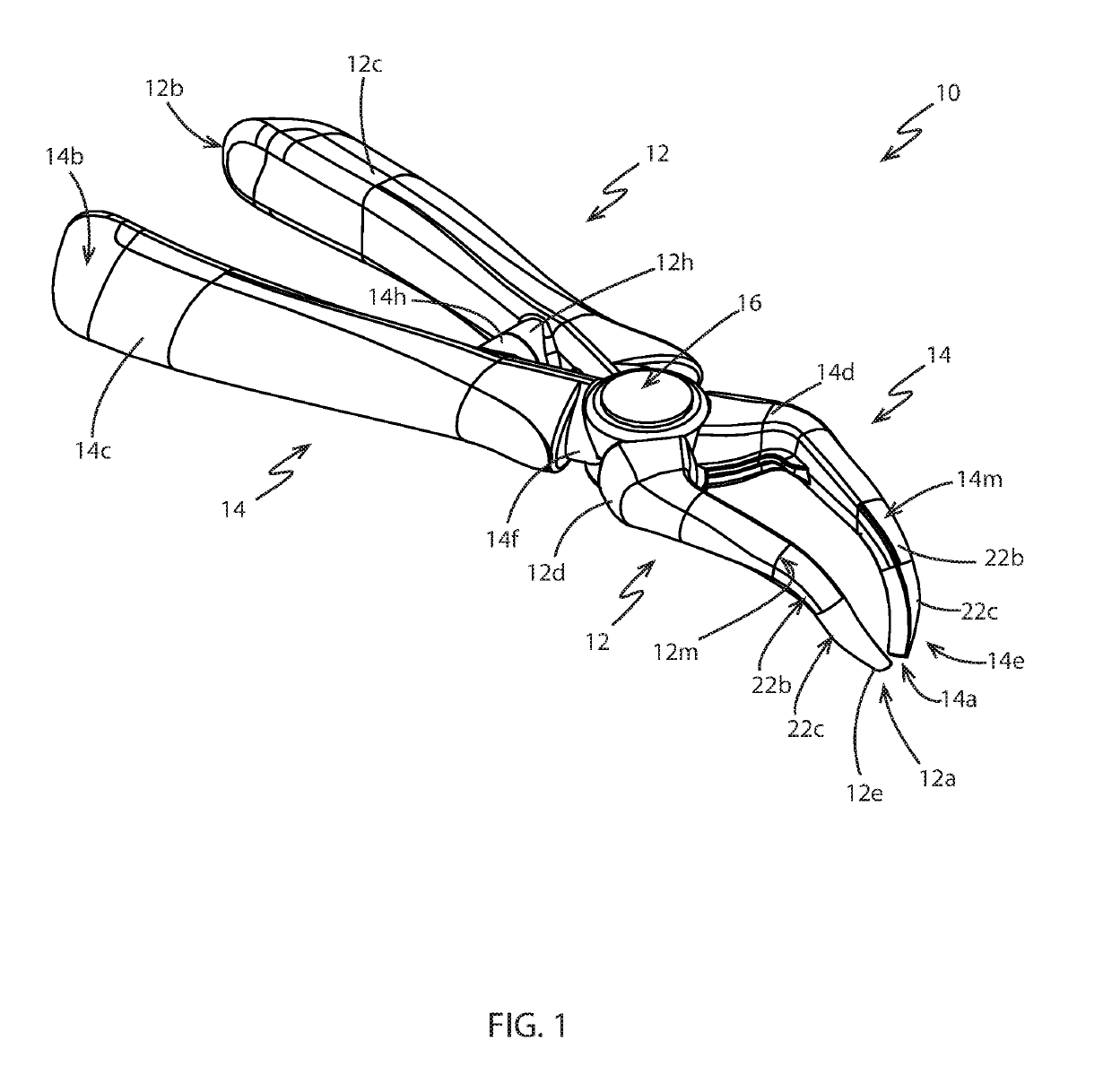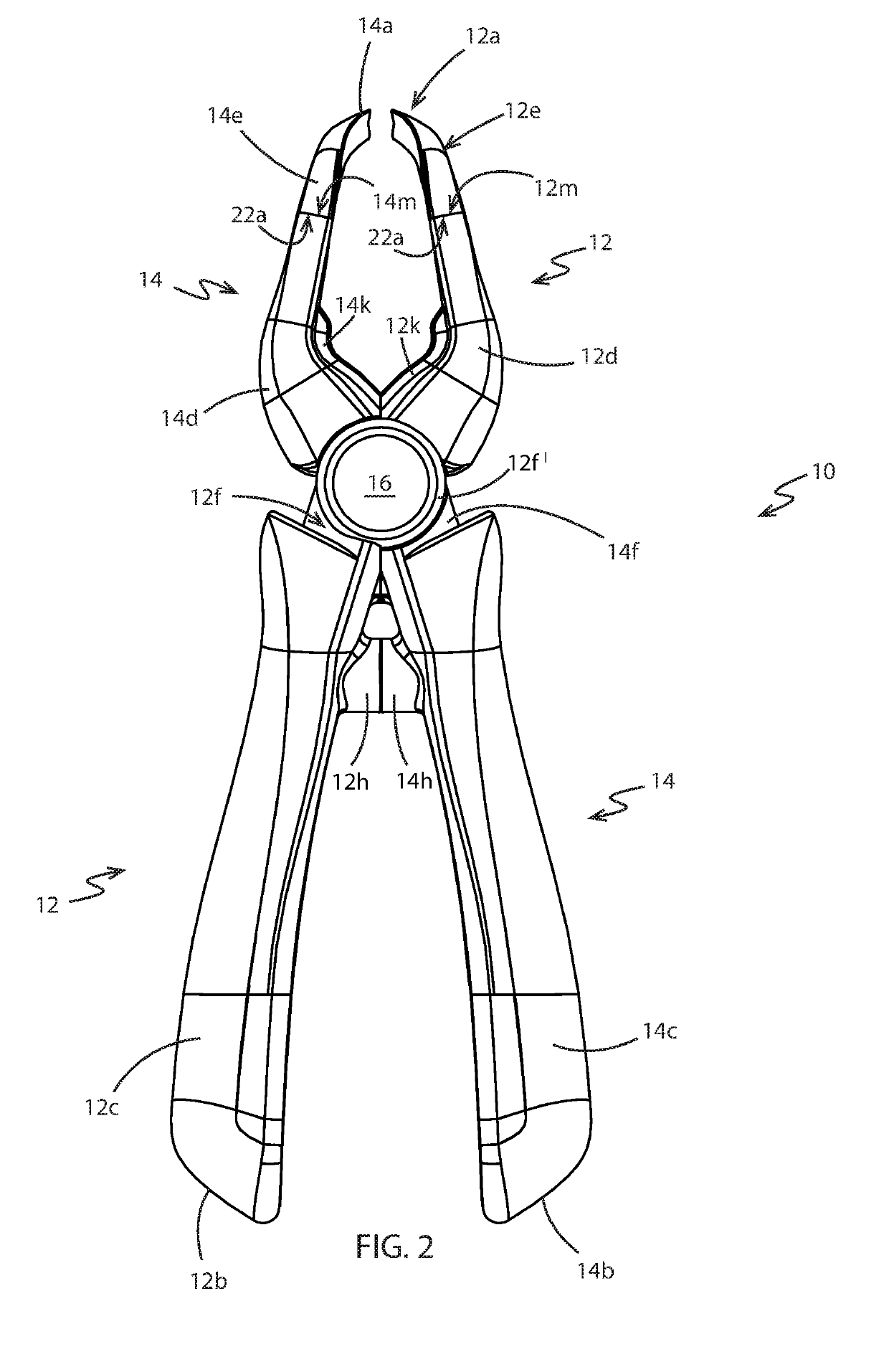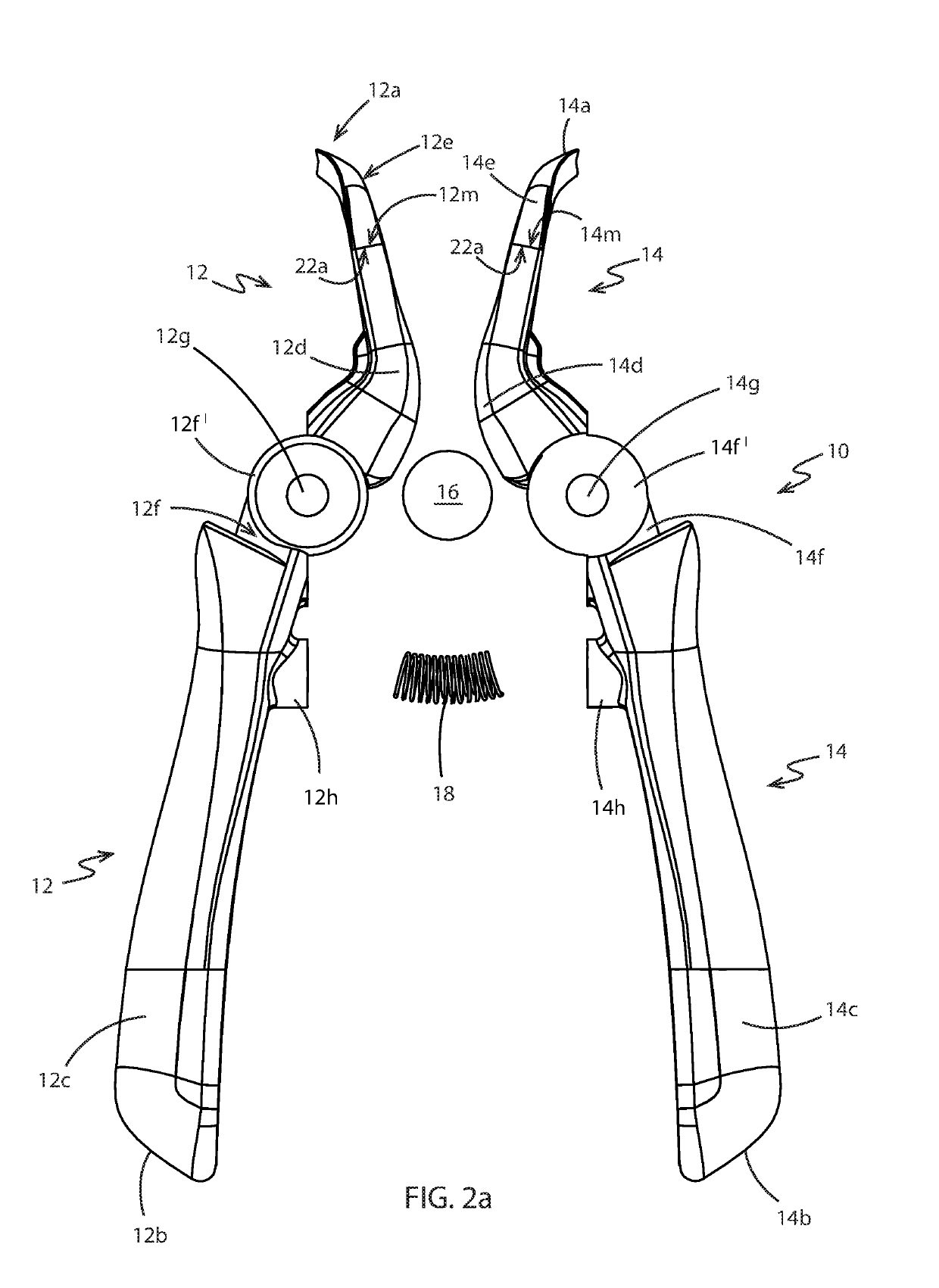Tooth extraction dental pliers
a technology of tooth extraction and pliers, which is applied in the field of tooth extraction dental pliers, can solve the problems that tooth removal may be somewhat distressing for children and parents, and achieve the effect of limiting the amount of for
- Summary
- Abstract
- Description
- Claims
- Application Information
AI Technical Summary
Benefits of technology
Problems solved by technology
Method used
Image
Examples
Embodiment Construction
[0030]Referring to FIGS. 1-13, there is shown a pair of dental pliers in accordance with an aspect of the present disclosure, generally indicated at 10. Pliers 10 are designed to be usable by parents or care-givers of young children who are not professionals when it comes to extracting teeth. These parents therefore tend to lack the knowledge, experience and skill that a dentist has. As a consequence, pliers 10 have been designed to be a light-weight, easy to use tool that may be purchased at a relatively low price point as it may only be used a few times in the life of the tool. Pliers 10 are fabricated from materials that allow the device to be washed in a dishwasher. Because pliers 10 will tend to be used within a family, there is little chance of infection and there is therefore no need to autoclave the device. Washing pliers 10 in the dishwasher is sufficient to clean the device for future use.
[0031]Since a parent or care-giver should only be extracting an already loose, wiggly...
PUM
 Login to View More
Login to View More Abstract
Description
Claims
Application Information
 Login to View More
Login to View More - R&D
- Intellectual Property
- Life Sciences
- Materials
- Tech Scout
- Unparalleled Data Quality
- Higher Quality Content
- 60% Fewer Hallucinations
Browse by: Latest US Patents, China's latest patents, Technical Efficacy Thesaurus, Application Domain, Technology Topic, Popular Technical Reports.
© 2025 PatSnap. All rights reserved.Legal|Privacy policy|Modern Slavery Act Transparency Statement|Sitemap|About US| Contact US: help@patsnap.com



